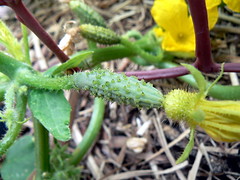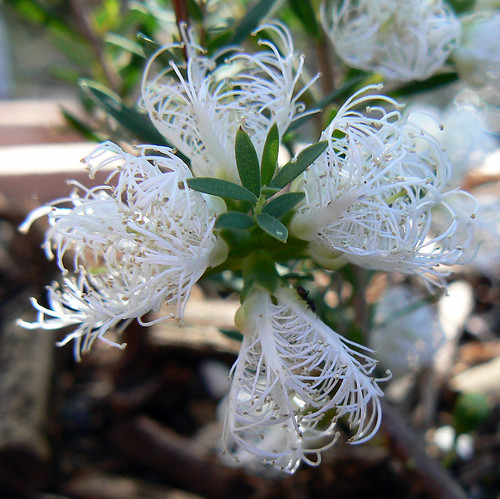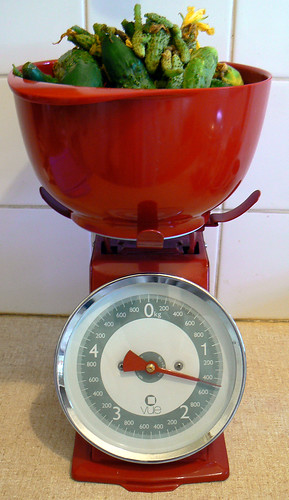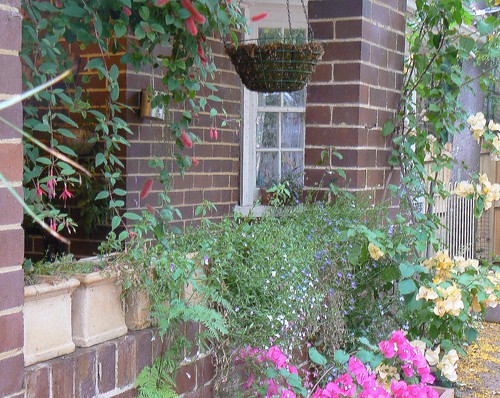
Firstly, thanks to all who have visited the blog and posted, and to those who have visited silently and stealthily and left no sign. You all make me want make it as good as my skills allow!
At TAFE today, we were appalled to find an array of damage from sundry pests. In one case, the larvae of Sciarids (Fungus Gnats) had so infested the tomato crop of Margaret D. that all but four of the plants had to be sacrificed. The adults are also all over the leaves of our potatoes, but it's the maggots that do the damage.
But the good guys were there too. Like this assassin bug, above, family
Reduviidae. Assassin bugs, as the name suggests, are predators, and eat caterpillers by sucking out their precious bodily juices. Isn't it stunningly gorgeous?
Meanwhile, my cornichon cucumbers are close to harvest! I'm hoping that I'll pick them next week. They need only be little, because I'm going to pickle them.
See the latest on the website.

I've also updated my
Recommended Books page, to include some new additions to my bookshelf:
Botany for Gardeners by Brian Capon
Resurrection in a Bucket by Margaret Simons
Fruit and Vegetable Gardening in Australia by Michael Pollock
A Primer of Ecological Genetics by Conner and Hartl
And there's a new section:
Insect Gallery. My early xmas present was a Panasonic DMC-FZ7 Lumix with 12x optical zoom. I love it to pieces. And now that I can take better macros, this part of the site is liable to grow fast! One of my teachers at TAFE is Mark Latham (no, not the one who trashes Panasonic DMC-FZ7 Lumixes with 12x optical zoom) and apart from being a botanist, he's also an entomologist. (And I just know you're going to enjoy these pages, Mark!) He's a fabulous resource, not to mention someone whose insect-obsessive personality is deeply reassuring to someone like me.









